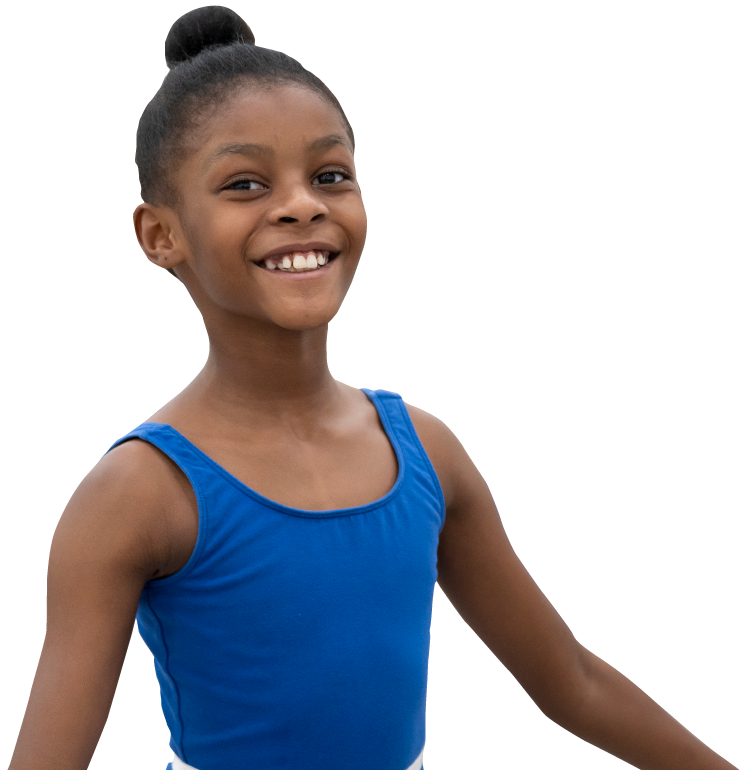Research and Performance
Overview
The Research and Performance department at Elmhurst Ballet School strives to produce high-quality research that will have direct impact on the health and performance of our students. We are embedding research in our learning environment in order to develop, conceptualise and evaluate innovative ideas that can inform practice, facilitate injury prevention and improve performance.
Collaborations
Kelly Hough-Coles, MSc, PGCE, BA (Hons).
Born in England, UK, Kelly has a Bachelor of Arts in Dance from the University of Hull, a Postgraduate Certificate in Education in Dance (Secondary) from Middlesex University and a MSc in Dance Science from the University of Wolverhampton. Since April 2022, Kelly has undertaken a PhD in Sport and Recreation at the University of Wolverhampton (UK), with a focus on Screening Protocols for Pointe Readiness. Kelly has taught in a variety of settings including secondary school, dance schools, and is currently a Lecturer in Dance Education at the Royal Academy of Dance, where she lectures and tutors: Dance Science on the undergraduate programmes and Dance Teaching Education on the PGCE and MAE programmes. Kelly also delivers pre-pointe and pointe sessions at her local dance school in Nottinghamshire (UK) and is currently a member of the IADMS dance publications committee. Her main research interests specifically include safe dance practice and applying Dance Science research and pedagogy as practice in Dance Education.
PhD Project Description.
Presently, there lacks a regulation system for dance teachers and institutions to ensure mandatory pre-pointe evaluation screening measures to ensure safe transition to training en pointe. Therefore, dancers may become injured if not screened or assessed by unqualified individuals. There is also a void in research regarding a universal screening procedure and specific guidelines that could be used within institutions, which is imperative for dance teachers when assessing readiness for pointe.
Research suggests that several tests (airplane, topple, relevé, sauté, isometric and isokinetic strength, star excursion balance), along with numerous criteria (chronological age, core, ankle, and pelvic stability, core, lower limb, and ankle strength, range of motion (ROM), flexibility of the foot and ankle (plantarflexion), balance, foot, ankle, and lower limb alignment, technique, years of training, musculoskeletal maturation, and stability and control while raising and lowering (or performing relevé) onto and from pointe.) are required to safely train en pointe; however, no longitudinal studies have been completed to validate these findings or how reliable these tests are at limiting injury susceptibility.
Many dance teachers may not use functional skills tests and rely on their own teacher assessment and knowledge to determine when their students are pointe ready. But, if they do not utilise these skills tests, what forms their assessment when deciding pointe readiness in their students? This PhD aims to provide insight into what methods of assessment are utilised by pointe teachers when determining pointe readiness of their students, and how accurate these methods are at determining pointe readiness and limiting pointe-related injury.
Michelle Schachtler Dwarika
Born in Basel, Switzerland, Michelle has an MA in theatre, arts and sciences from the University in Oslo, Norway, a diploma in teaching drama and movement from the Oslo Metropolitan University and an MAS in Dance Science from the University in Bern, Switzerland. From September 2022 she is going to pursue a Phd in Sport/ Dance psychology at the University of Birmingham in collaboration with Elmhurst Ballet School (UK). Michelle has been a mental coach for dance students at different institutions, such as the Norwegian National Ballet School and Oslo National Academy of the Arts. She has been working as an educator at different educational institutions in and around Oslo, Norway and was a research assistant (from 2020 to 2022), program coordinator (from 2021-2022) for dance and theatre education and guest lecturer in dance psychology (2021) at Oslo National Academy of the Arts. Currently a member of the IADMS dance educator’s committee, Michelle is working closely with an international network of dancers and dance educators alike. Her main research interests include mental health and resilience in dance, stressors and appraisals in dance as well as autonomy in dance education.
PhD Project Description
There are strong indications that young, aspiring dancers especially are facing a multitude of stressors. These can range from external stressors, such as living far away from home, to cultural stressors embedded in dance culture, like set physical and identity ideals. Moreover, how we appraise (or evaluate) these stressors is of importance. We can evaluate them negatively and thus appraise them as a threat, or positively and appraise them as a challenge from which we can grow.
Research shows, that such stressors and their negative appraisal can lead to dancers experiencing mental health challenges and mental illnesses, such as eating disorders, anxiety and depression. To date we know still little about vocational dancers’ experience with stress and how they evaluate and deal with challenges they are confronted by. Therefore, the aims of this collaborative PhD (between the University of Birmingham and Elmhurst Ballet School) are twofold. One aim is to understand what stressors students at Elmhurst Ballet School experience and how they appraise these challenges; the second is to develop an intervention that teaches the students to re-appraise these stressors as a challenge rather than a threat. Thus, this project hopes to empower the students at Elmhurst Ballet School to effectively use psychological tools and, ultimately, improve their mental health.
Anna Schrefl
Born in Austria, Anna studied contemporary dance at the Amsterdam University of the Arts and at Codarts in Rotterdam, the Netherlands. She holds a MAS in Dance Science from the University of Bern, Switzerland, and a MSc of Dance Science from the University of Wolverhampton. Anna worked as a freelance choreographer for various dance, theater, and music productions (1998-2015). She received her training as a Pilates instructor in New York and is a lecturer in Spiraldynamik®, a concept of understanding functional anatomy. Anna has been working as a trainer for classical, contemporary, and musical dancers for over 20 years. She is currently a guest lecturer in anatomy and physiology at the dance department of the Zurich University of the Arts, Switzerland, and an external doctoral student at the University of Bern.
PhD Project Description
In the past decades, dance science has focused on supplemental strength and endurance training to decrease injury rates in dancers and help them to enhance their performance. However, there is a lack of studies on strength and endurance exercises and evidence-based test protocols for the feet in the dance population. Anecdotal evidence shows that many dance teachers, health practitioners and doctors recommend dancers to do exercises to strengthen their feet as part of their rehabilitation program after an injury or to improve their ability to jump or to balance. These exercises are targeting the intrinsic (IFM) as well as the extrinsic foot musculature (EFM). The IFM originates and inserts on the foot itself, whereas the EFM originates on the lower or upper leg and then inserts on the foot. Little research has been conducted to provide the dance community with data on the role of the IFM and EFM in injury prevention and dance performance improvement, let alone to provide methodologically proven exercises and assessment tools.
The general aim of my research project is to investigate the role of IFM and EFM in dance and to examine test batteries targeting these muscle groups. The Single Leg Heel Rise (SLHR) test is a simple screening tool to assess muscular endurance of the calf musculature and is an increasingly popular manual muscle test in various areas of dance. Although the SLHR has shown high reliability in the medical field, no uniform description of this test exists in dance. Therefore, a specific aim of my research project is to evaluate the validity and reliability of the SLHR in dance, provide normative data of this test in ballet and contemporary dancers, and establish an evidence-based test protocol for this test.
Courses
Join our mailing list for our latest news and events


